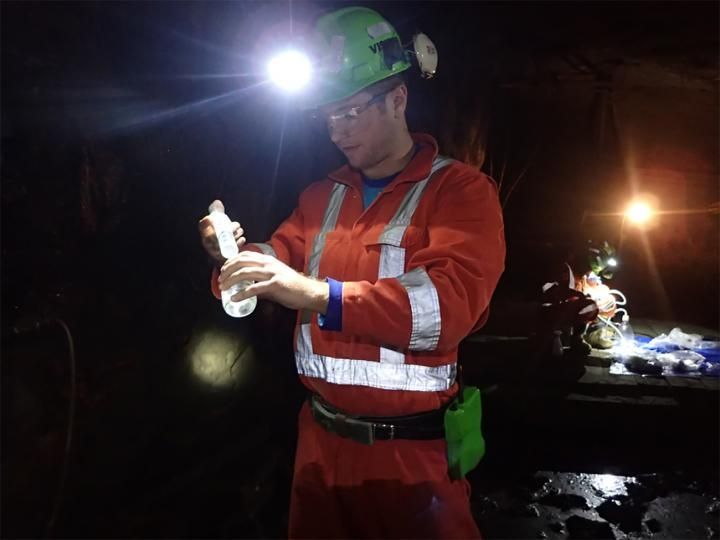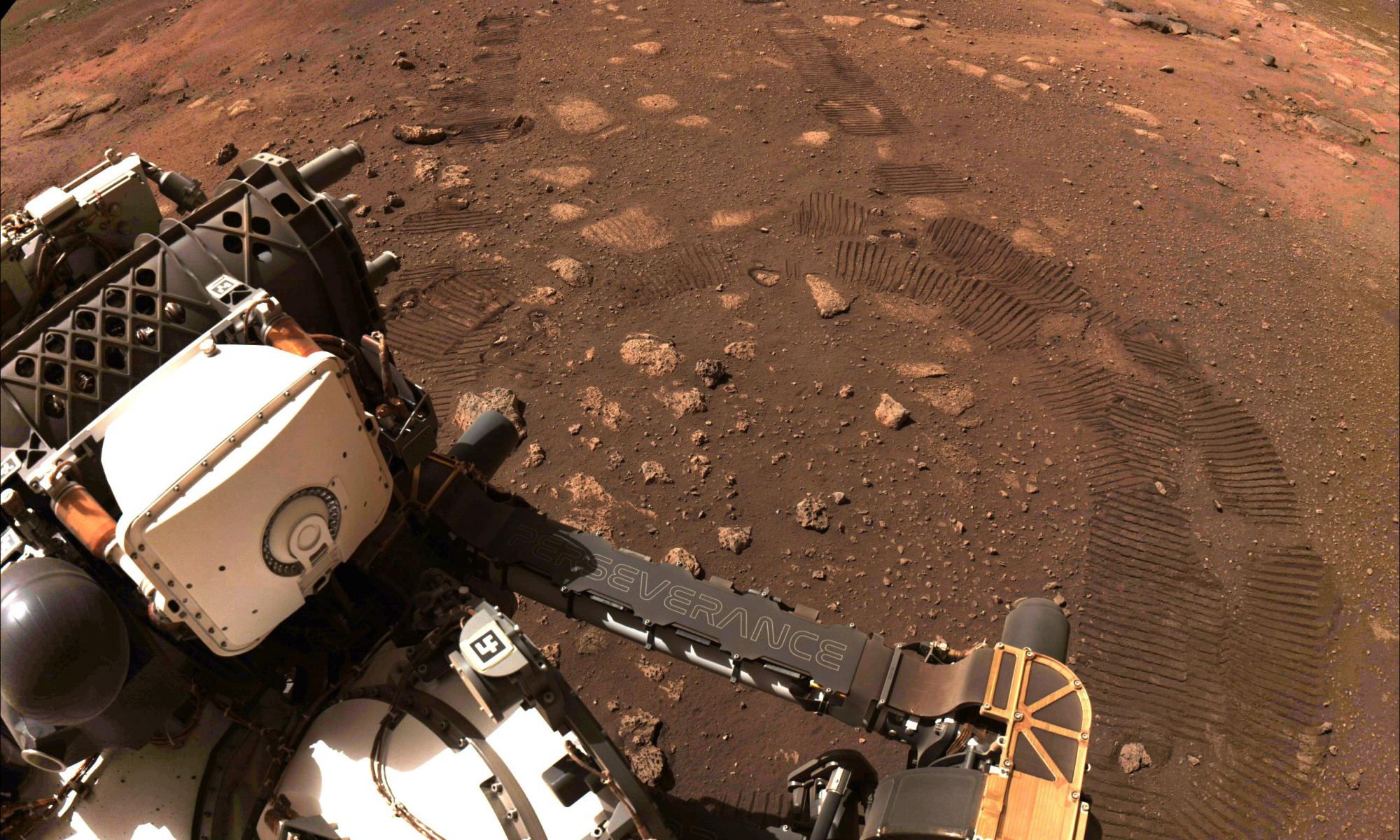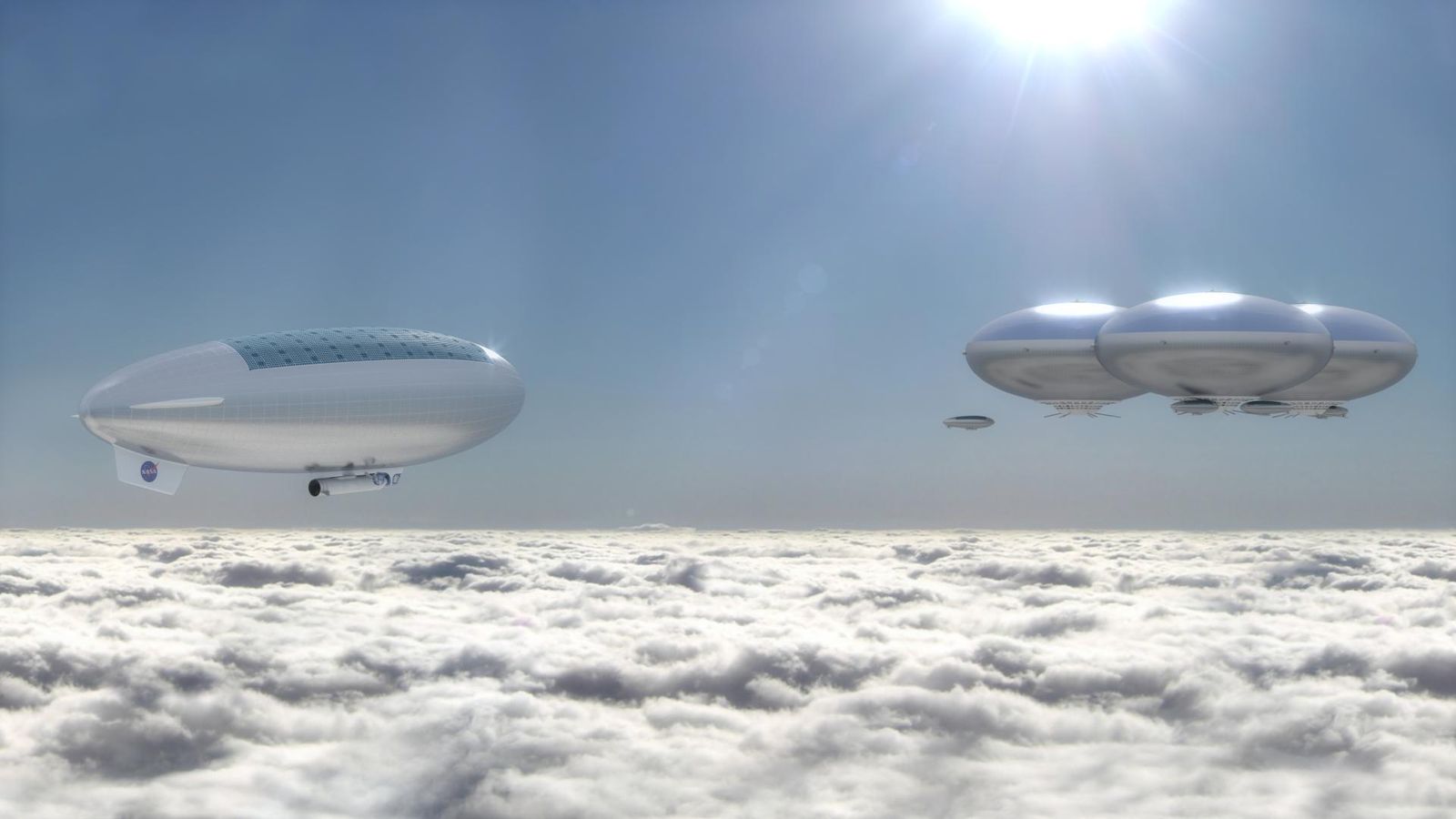Chirality is a word normally found in biological textbooks that will occasionally pop up in the astronomy community, usually when discussing potential biosignatures. Typically the term is explained by analogy with left and right hands – how the molecules are curved in one specific way or another, similarly to how human hands are formed either as left or right. These two curvatures of the molecules are mirror images of each other, but not exactly the same. Until recently, detection of chirality has focused on in situ measurements, such as those on Mars where molecules can be sampled directly. Now, however, a team led by Drs. Lucas Patty and Jonas Kühn at the University of Bern, has managed to detect chirality remotely using some impressive new technology.
Continue reading “Astrobiologists Detect a Signature of Life Remotely. Don’t get too Excited, Though, it was With a Helicopter Here on Earth”New Technique to Search for Life, Whether or not it’s Similar to Earth Life

In 1960, the first survey dedicated to the Search for Extraterrestrial Intelligence (SETI) was mounted at the Green Bank Observatory in West Virginia. This was Project Ozma, which was the brainchild of famed astronomer and SETI pioneer Frank Drake (for whom the Drake Equation is named). Since then, the collective efforts to find evidence of life beyond Earth have coalesced to create a new field of study known as astrobiology.
The search for extraterrestrial life has been the subject of renewed interest thanks to the thousands of exoplanets that have been discovered in recent years. Unfortunately, our efforts are still heavily constrained by our limited frame of reference. However, a new tool developed by a team of researchers from the University of Glasgow and Arizona State University (ASU) could point the way towards life in all of its forms!
Continue reading “New Technique to Search for Life, Whether or not it’s Similar to Earth Life”There Might be Volcanoes at the Bottom of Europa’s sub-ice Oceans
In about three years, NASA plans to launch a robotic orbiter that will study Jupiter’s mysterious moon Europa. It’s called the Europa Clipper mission, which will spend four years orbiting Europa to learn more about its ice sheet, interior structure, chemical composition, and plume activity. In the process, NASA hopes to find evidence that will help resolve the ongoing debate as to whether or not Europa harbors life in its interior.
Naturally, scientists are especially curious about what the Clipper mission might find, especially in Europa’s interior. According to new research and modeling supported by NASA, it’s possible that volcanic activity occurred on the seafloor in the recent past – which could be happening still. This research is the most detailed and thorough 3D modeling on how internal heat is produced and transferred and what effect this will have on a moon.
Continue reading “There Might be Volcanoes at the Bottom of Europa’s sub-ice Oceans”Researchers Develop a new Framework for Searching for Biosignatures
Planning ahead is something astronomy and space exploration excels at. Decadal surveys and years of engineering effort for missions give the field a much longer time horizon than many others. In the near future, scientists know there will be plenty of opportunities to search for biosignatures everywhere from nearby ocean worlds (i.e. Titan) to far away potentially habitable exoplanets. But it’s not clear what those biosignatures would look like. After all, currently there is only Earth’s biosphere to study, and it would be unfortunate to miss hints of another just because it didn’t look like those found on Earth. Now a team led by researchers at the Santa Fe Institute (SFI) have come up with a framework that could help scientists look for biosignatures that might be completely different from those found on Earth.
Continue reading “Researchers Develop a new Framework for Searching for Biosignatures”Mars has the Right Conditions for Life Just Under the Surface
According to the immortal words of Ian Malcom (Jeff Goldblum) “Life..uh…finds a way”. Back in 2005, an article in Nature used the famous quote from Jurassic Park to describe the possibility of life surviving on Mars. It encapsulates the hope that life’s adaptability, which it has proved itself so many times over on Earth, could hold true on other planets as well. Now a new paper in Astrobiology shows that there might very well be a place where life can sustain itself on the red planet – right underneath the surface.
Continue reading “Mars has the Right Conditions for Life Just Under the Surface”Perseverance has Started Driving on Mars
On February 18th, 2021, NASA’s Perseverance rover landed in the Jezero Crater on Mars. Over the next two years of its primary mission, this robotic mission will carry on in the search for past life on Mars, obtaining soil and rock drill samples that will be returned to Earth someday for analysis. And as of March 4th, the rover conducted its first drive, covering 6.5 meters (21.3 feet) across the Martian landscape.
Continue reading “Perseverance has Started Driving on Mars”A Balloon Mission that Could Try to Confirm Life On Venus
So, Venus might have life! But how do we find out for sure?! We need to GO there.
Continue reading “A Balloon Mission that Could Try to Confirm Life On Venus”Beyond “Fermi’s Paradox” X: What is the Firstborn Hypothesis?
Welcome back to our Fermi Paradox series, where we take a look at possible resolutions to Enrico Fermi’s famous question, “Where Is Everybody?” Today, we examine the possibility that the reason for the Great Silence is that we are “early to the party”!
In 1950, Italian-American physicist Enrico Fermi sat down to lunch with some of his colleagues at the Los Alamos National Laboratory, where he had worked five years prior as part of the Manhattan Project. According to various accounts, the conversation turned to aliens and the recent spate of UFOs. Into this, Fermi issued a statement that would go down in the annals of history: “Where is everybody?“
This became the basis of the Fermi Paradox, which refers to the disparity between high probability estimates for the existence of extraterrestrial intelligence (ETI) and the apparent lack of evidence. Since Fermi’s time, there have been several proposed resolutions to his question, which includes the Firstborn Hypothesis that states that humanity could be the first intelligent life to emerge in our galaxy.
Continue reading “Beyond “Fermi’s Paradox” X: What is the Firstborn Hypothesis?”Searching for Phosphorus in Other Stars

The Search for Life can be a lot messier than it sounds. The three words make a nice, tidy title, but what it entails is extraordinarily difficult. How, in this vast galaxy, can we find life and the planets or moons that might host it? We’re barely at the point of either discovering or ruling out other life in our own Solar System.
Finding it somewhere else in the galaxy, even in our own interstellar neighbourhood, is a task so daunting it can be hard to comprehend.
So any time scientists think they’ve found something that can give them an edge in their near-impossible task, it deserves to be talked about.
Continue reading “Searching for Phosphorus in Other Stars”Could There Be Life in the Cloudtops of Venus?

When it comes to places with the potential for habitability, Venus isn’t usually considered on that list. The hot, greenhouse-effect-gone-mad neighboring planet with a crushing surface pressure and sulfuric acid clouds certainly isn’t friendly to life as we know it, and the few spacecraft humanity has sent to Venus’ surface have only endured a few minutes.
But up about 40 to 60 km (25 to 37 miles) above the surface, the atmosphere of Venus is the most Earth-like of any other place in the Solar System. There, Venus has air pressure of approximately 1 bar and temperatures in the 0°C to 50°C range. It’s not quite a shirtsleeves environment, as humans would need air to breathe and protection from the sulfuric acid in the atmosphere. Plus, also consider that Venus is considered to be in the habitable zone of our star.
Continue reading “Could There Be Life in the Cloudtops of Venus?”






